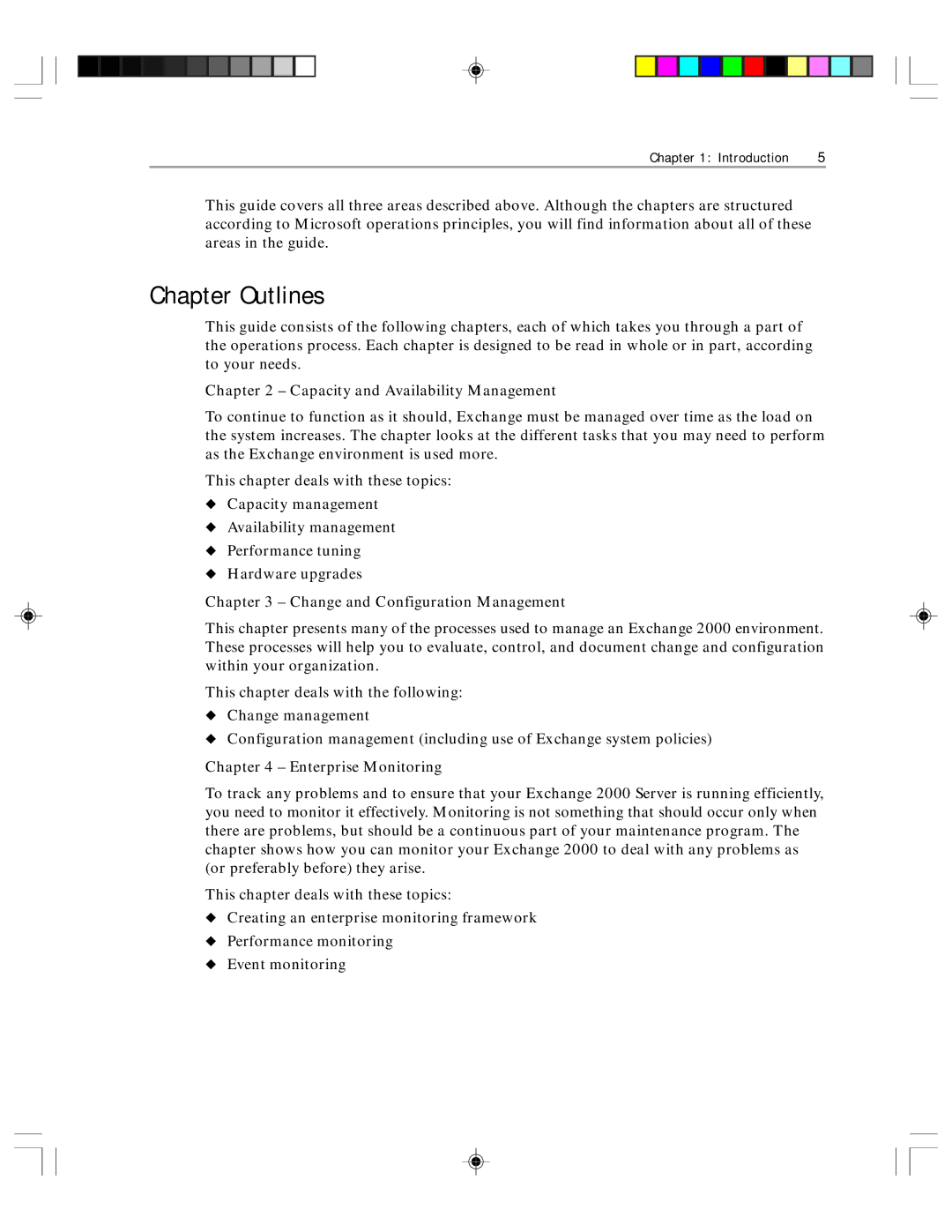
Chapter 1: Introduction | 5 |
This guide covers all three areas described above. Although the chapters are structured according to Microsoft operations principles, you will find information about all of these areas in the guide.
Chapter Outlines
This guide consists of the following chapters, each of which takes you through a part of the operations process. Each chapter is designed to be read in whole or in part, according to your needs.
Chapter 2 – Capacity and Availability Management
To continue to function as it should, Exchange must be managed over time as the load on the system increases. The chapter looks at the different tasks that you may need to perform as the Exchange environment is used more.
This chapter deals with these topics:
◆Capacity management
◆Availability management
◆Performance tuning
◆Hardware upgrades
Chapter 3 – Change and Configuration Management
This chapter presents many of the processes used to manage an Exchange 2000 environment. These processes will help you to evaluate, control, and document change and configuration within your organization.
This chapter deals with the following:
◆Change management
◆Configuration management (including use of Exchange system policies)
Chapter 4 – Enterprise Monitoring
To track any problems and to ensure that your Exchange 2000 Server is running efficiently, you need to monitor it effectively. Monitoring is not something that should occur only when there are problems, but should be a continuous part of your maintenance program. The chapter shows how you can monitor your Exchange 2000 to deal with any problems as (or preferably before) they arise.
This chapter deals with these topics:
◆Creating an enterprise monitoring framework
◆Performance monitoring
◆Event monitoring
